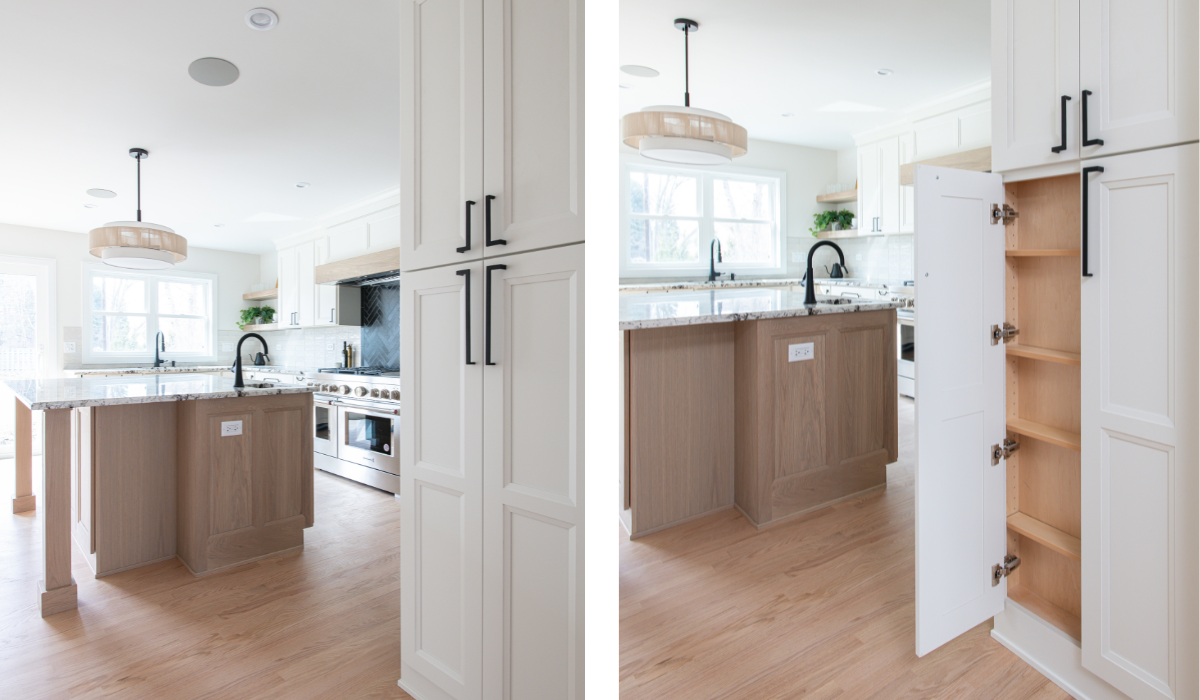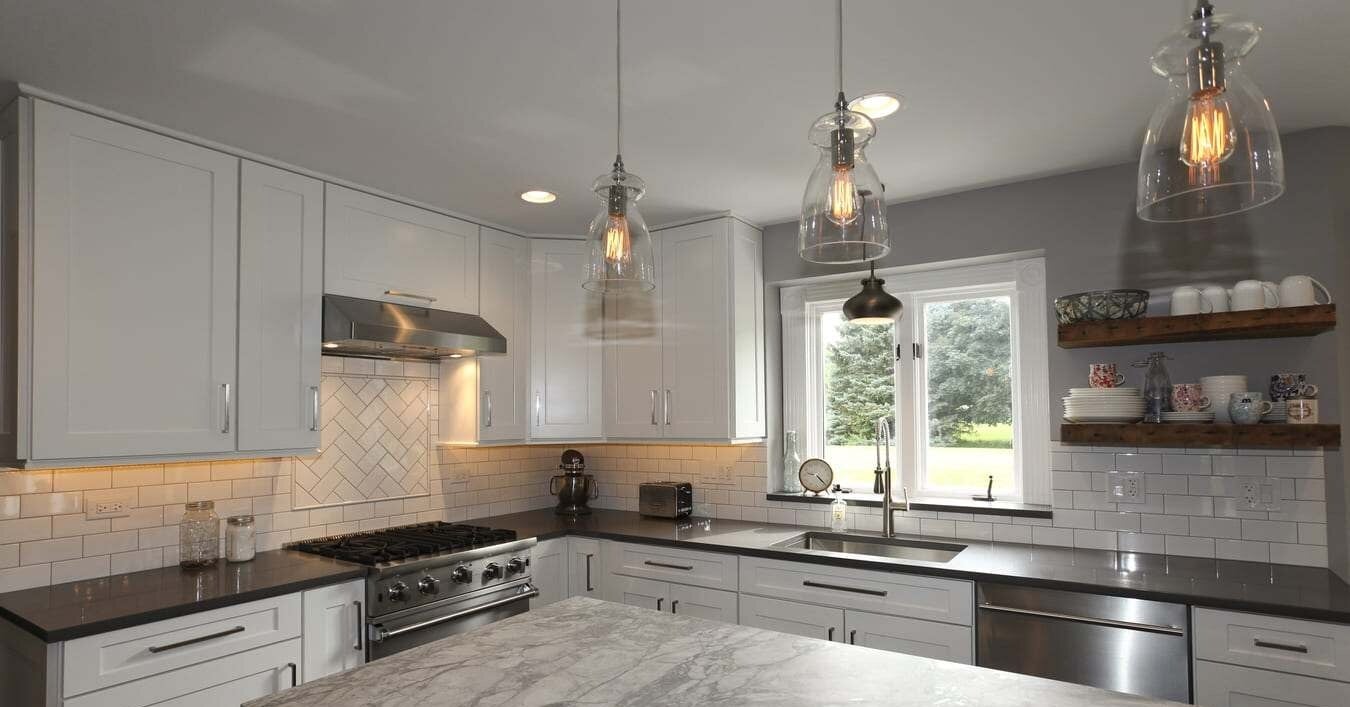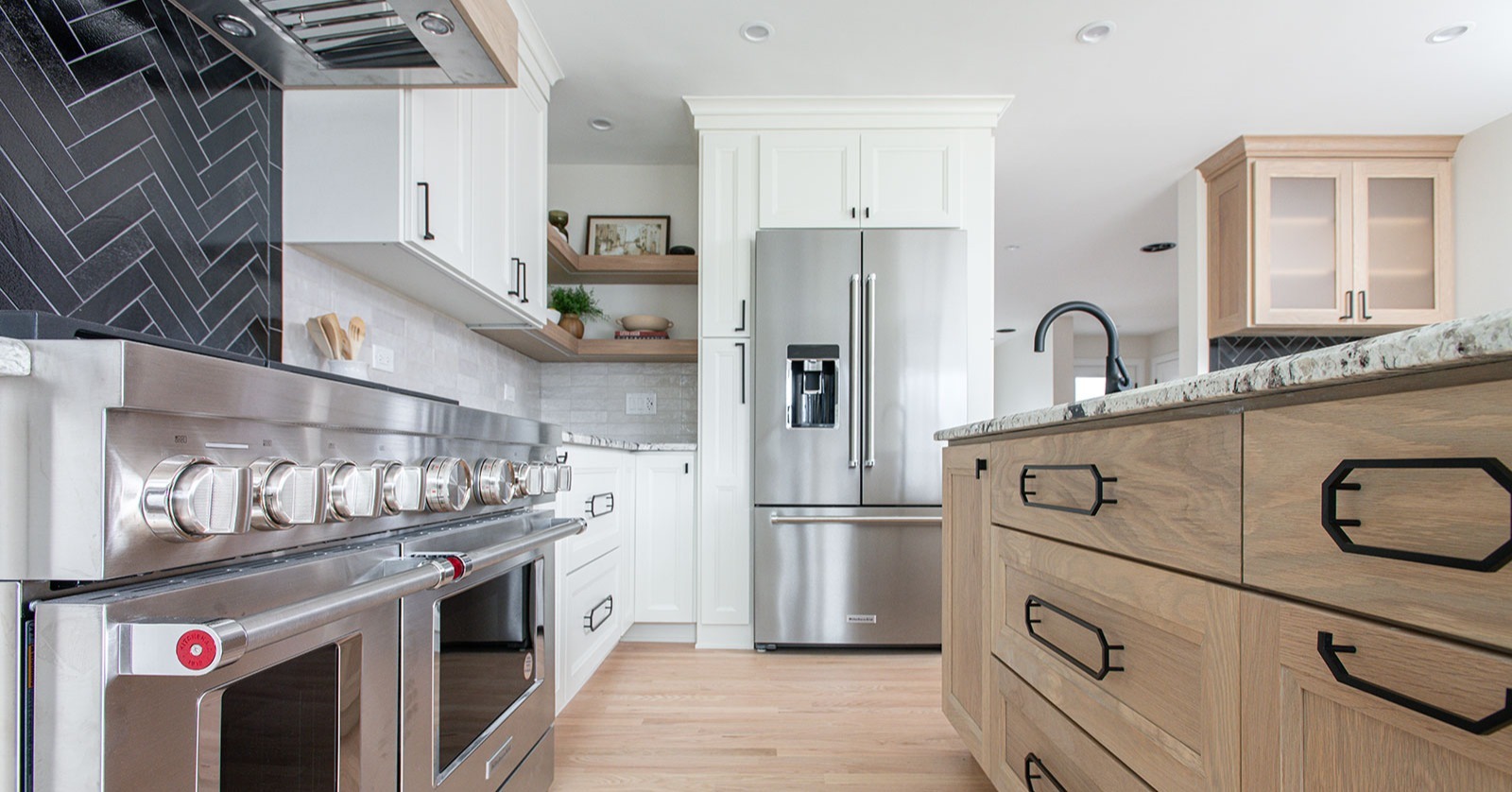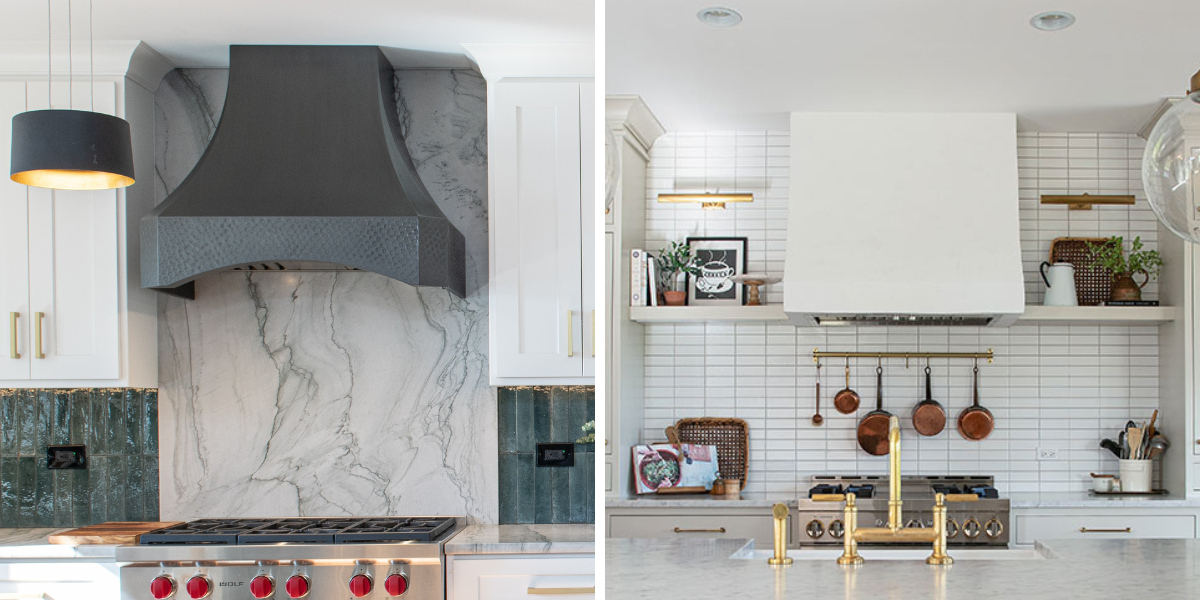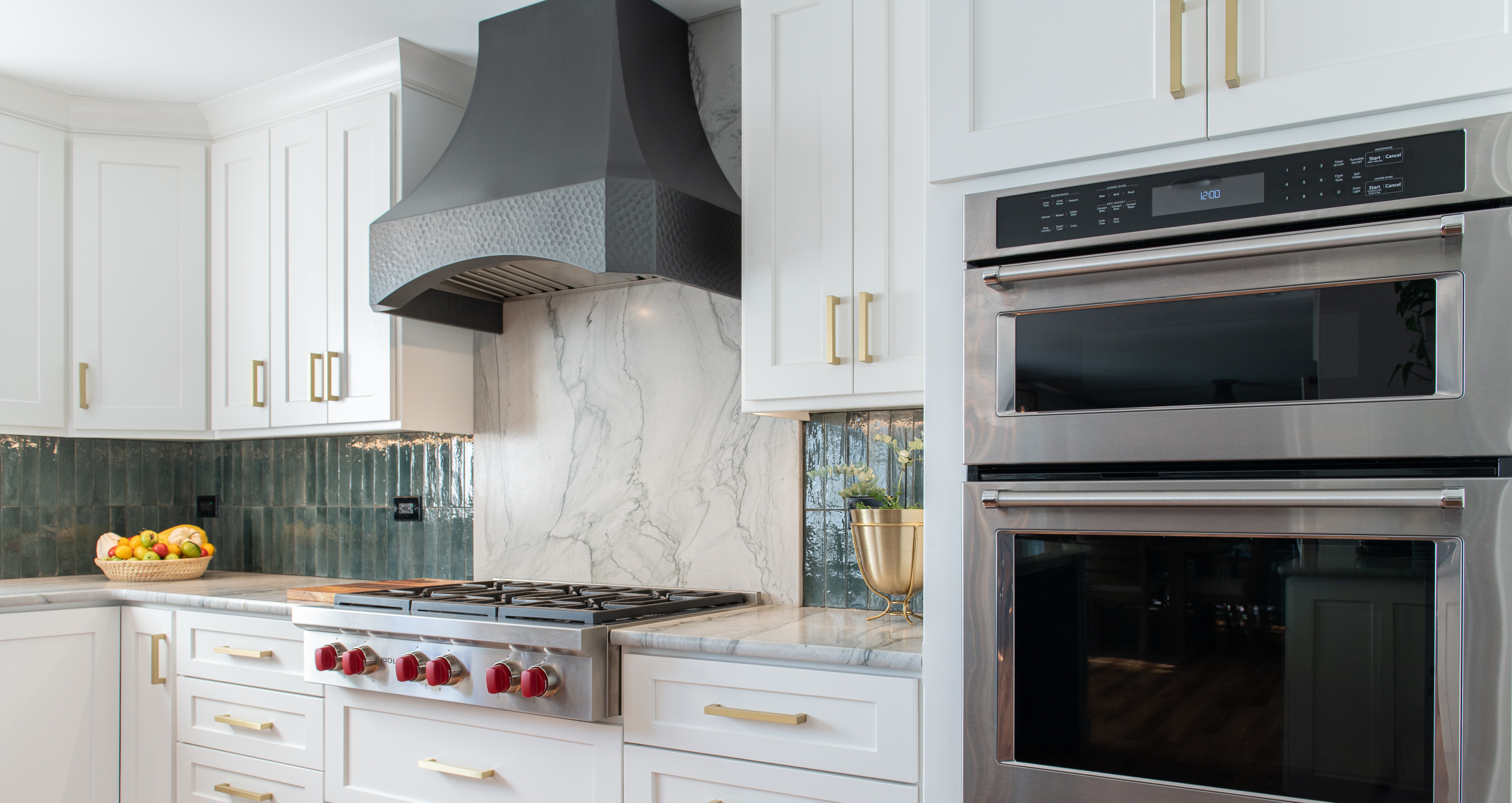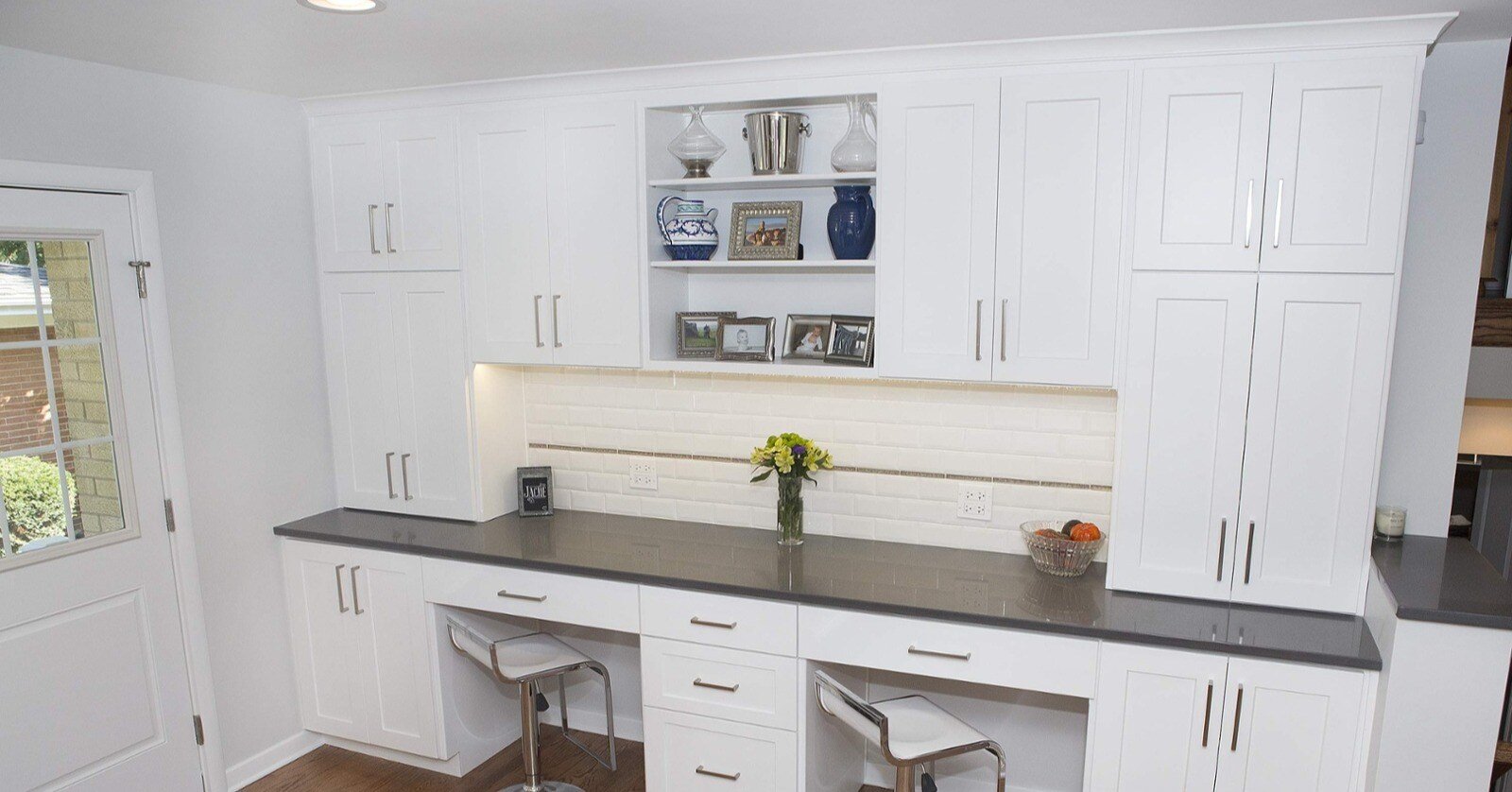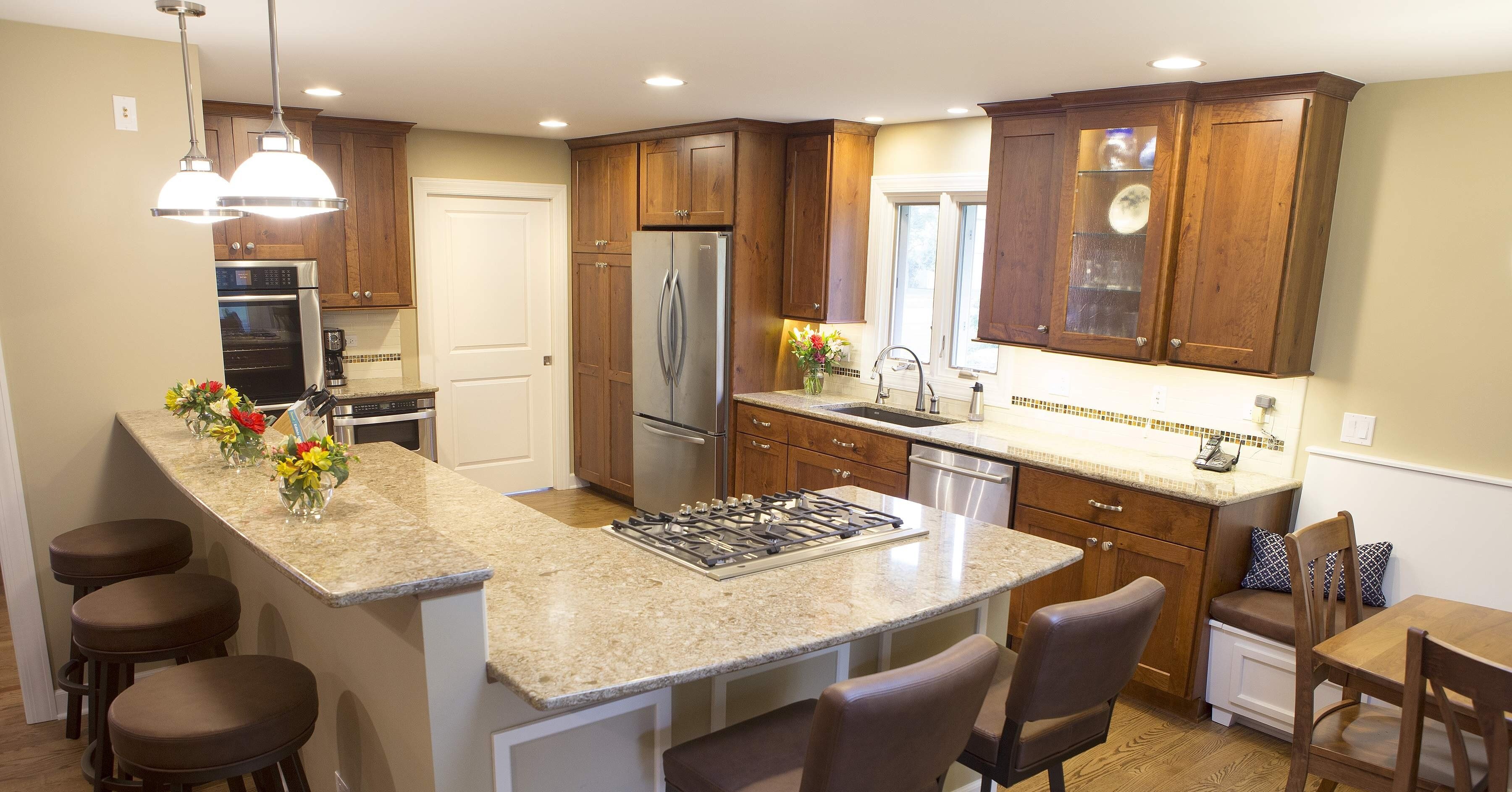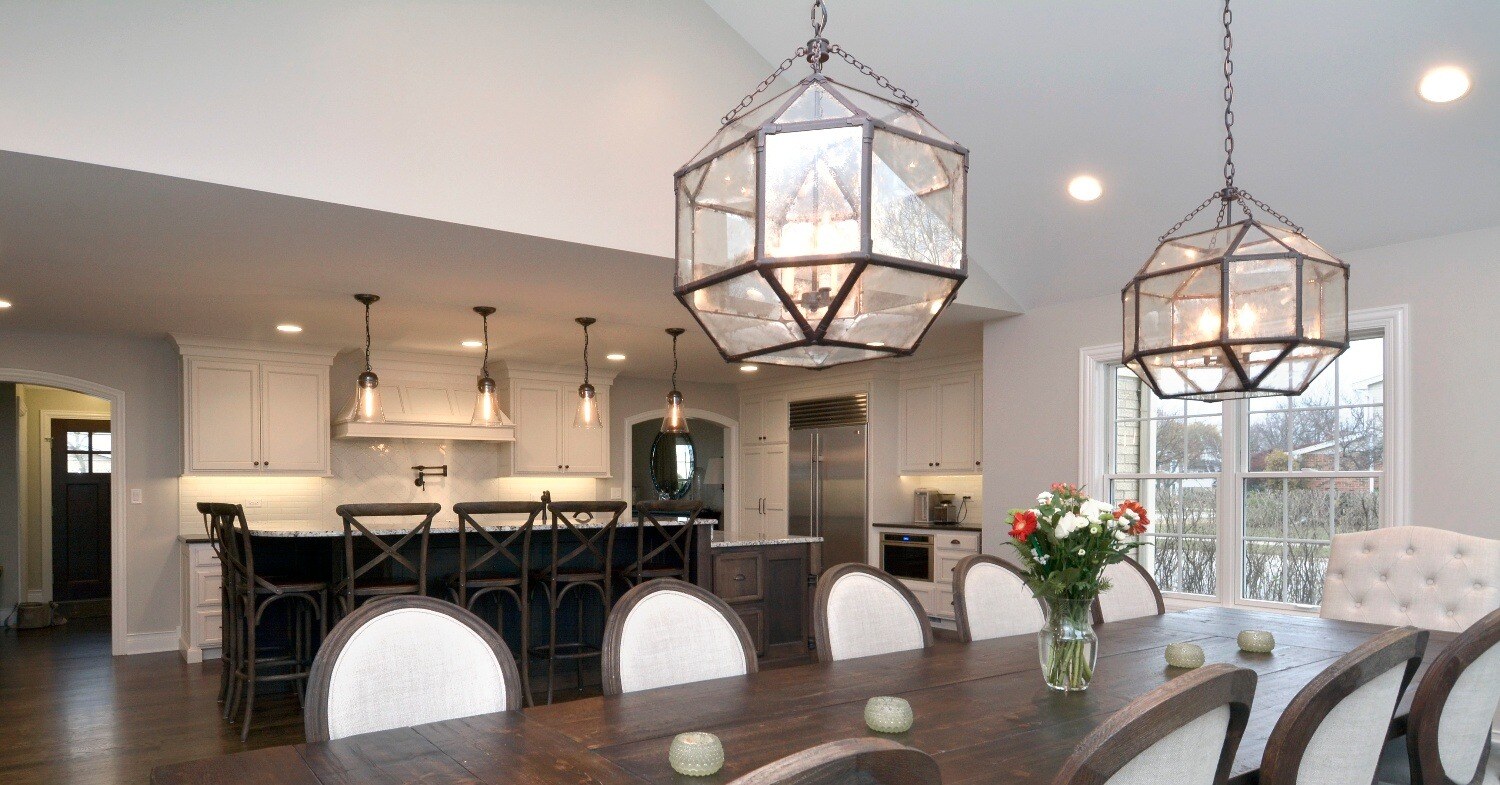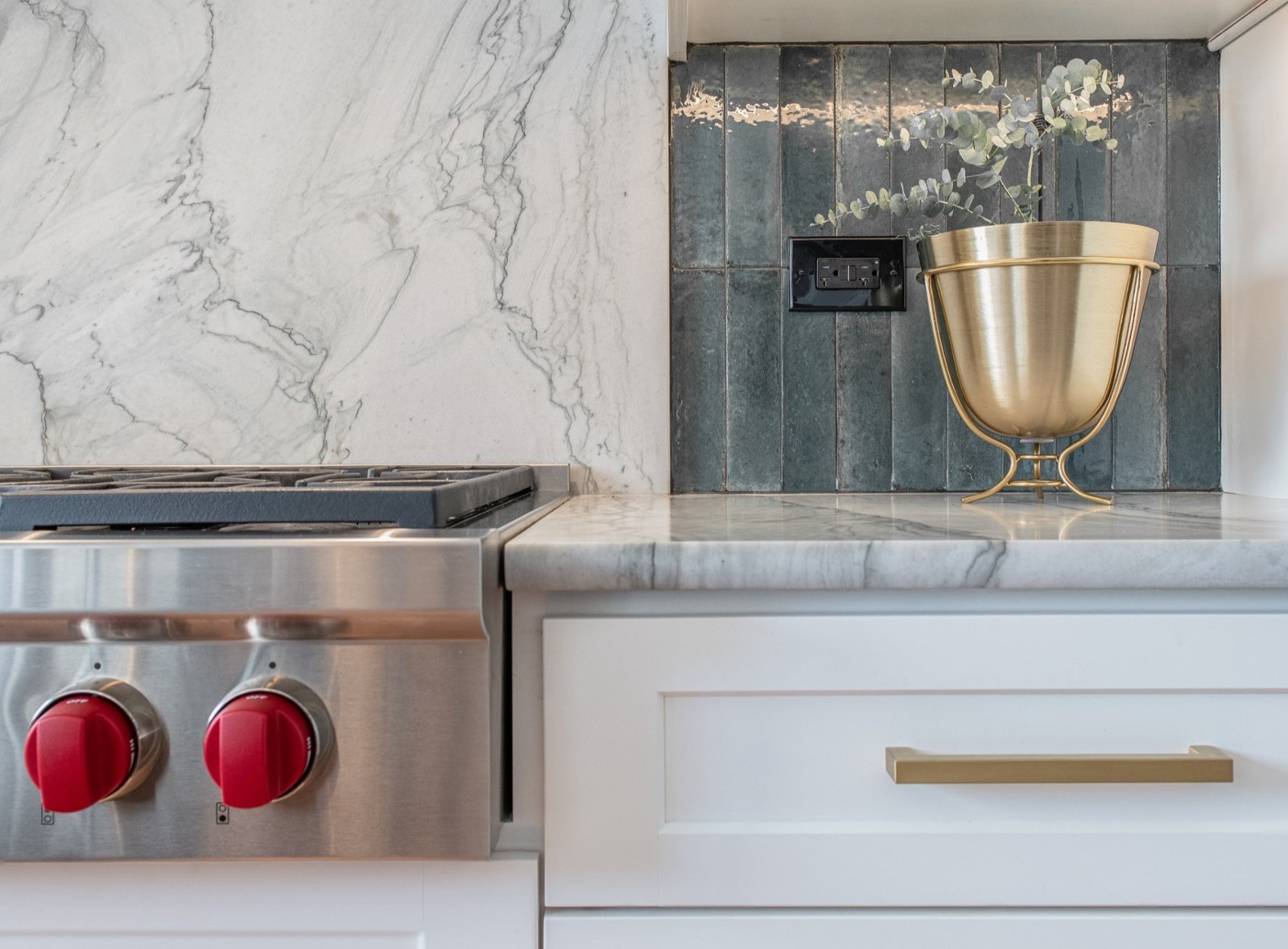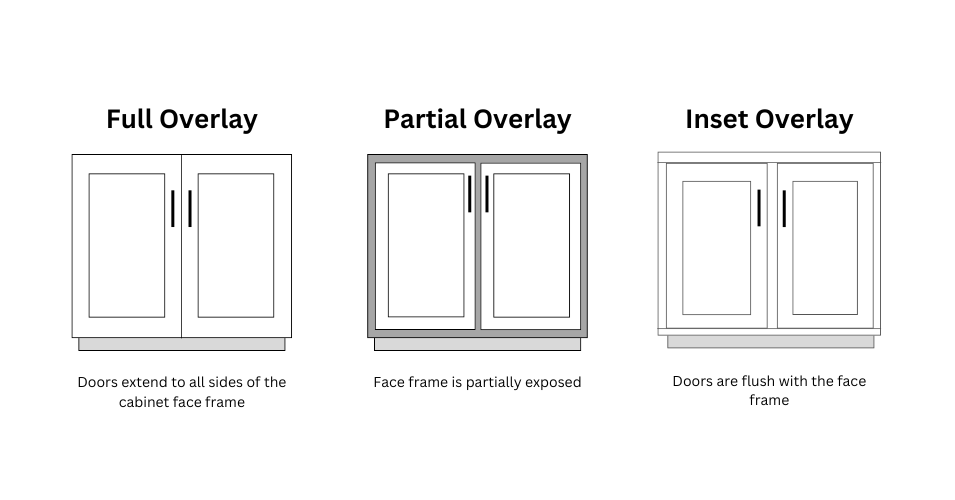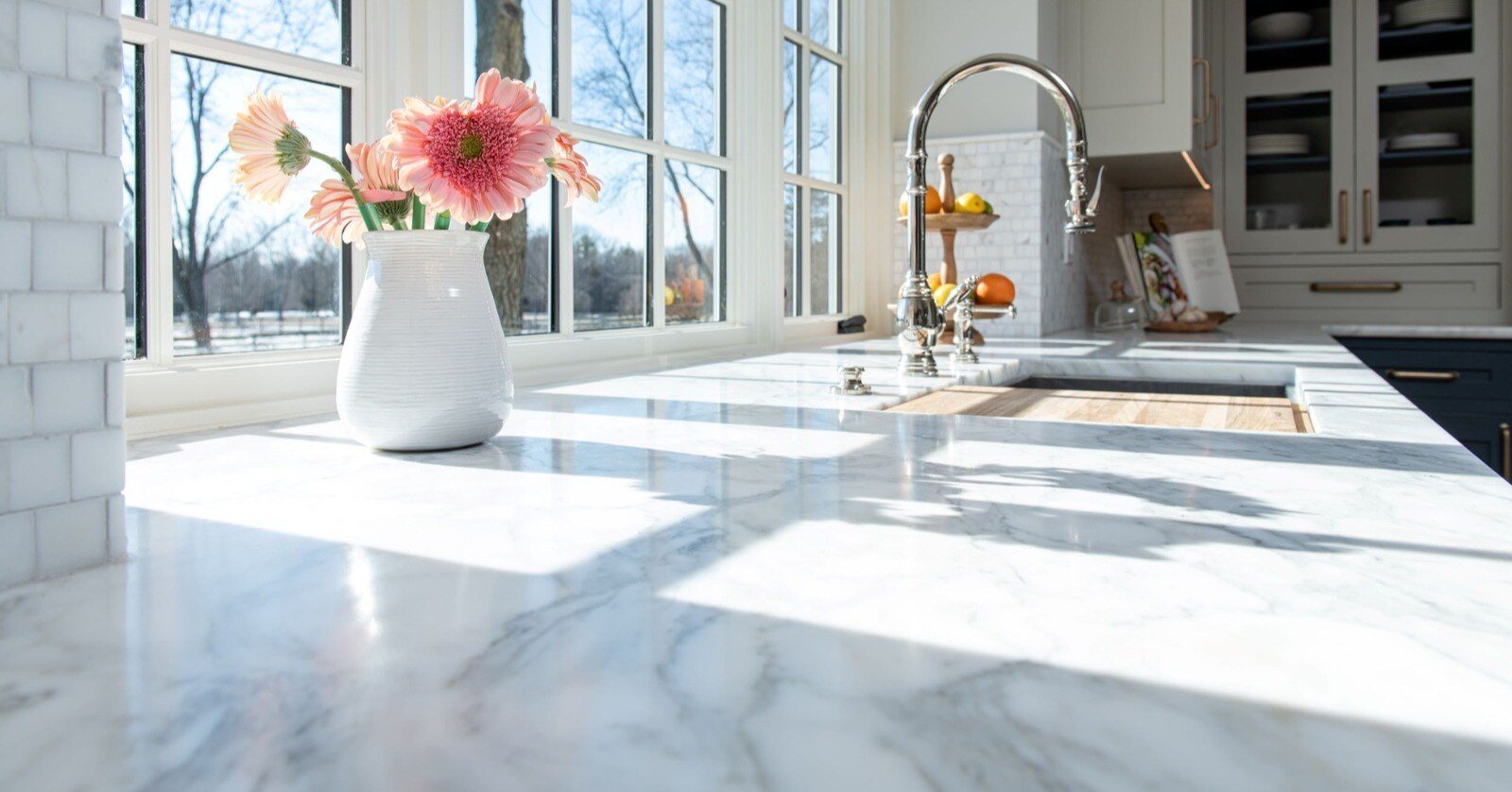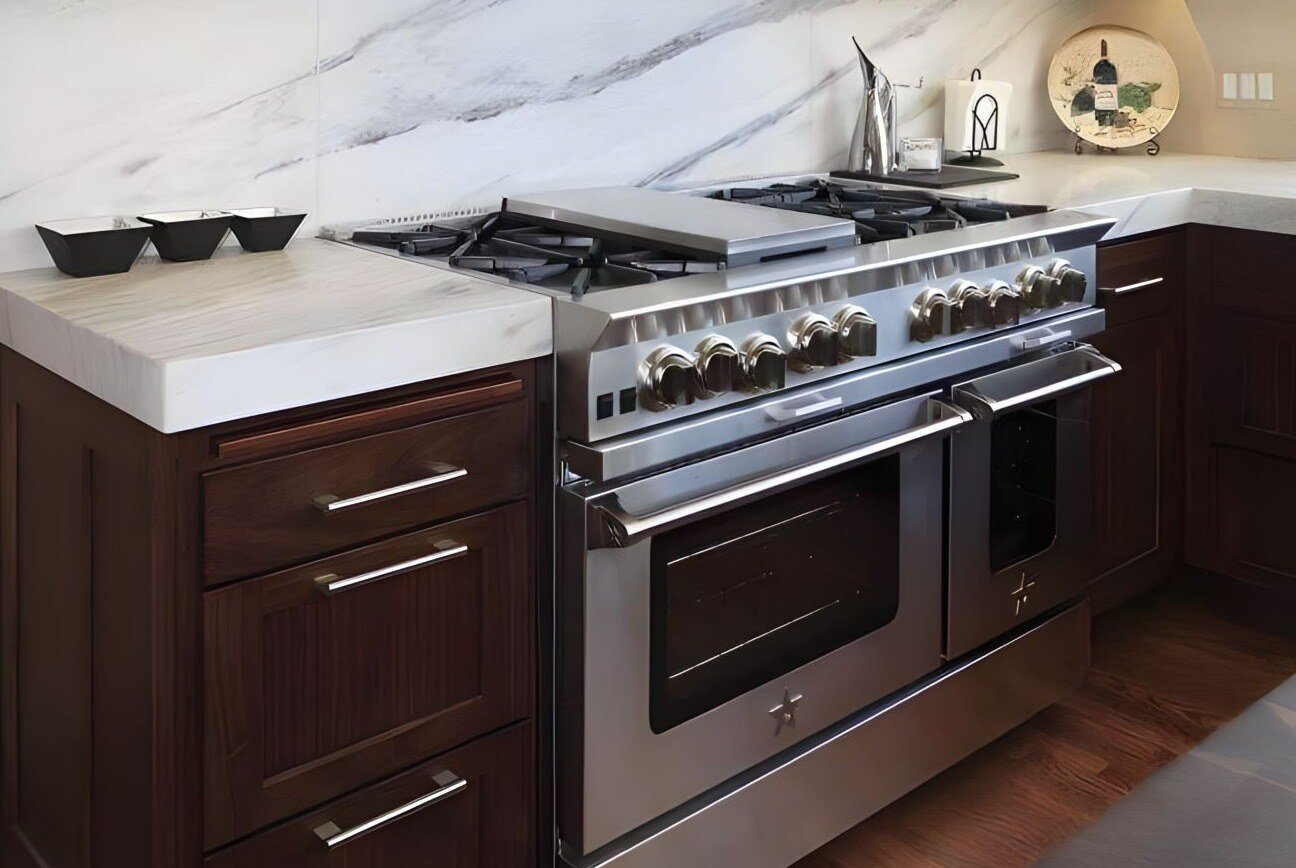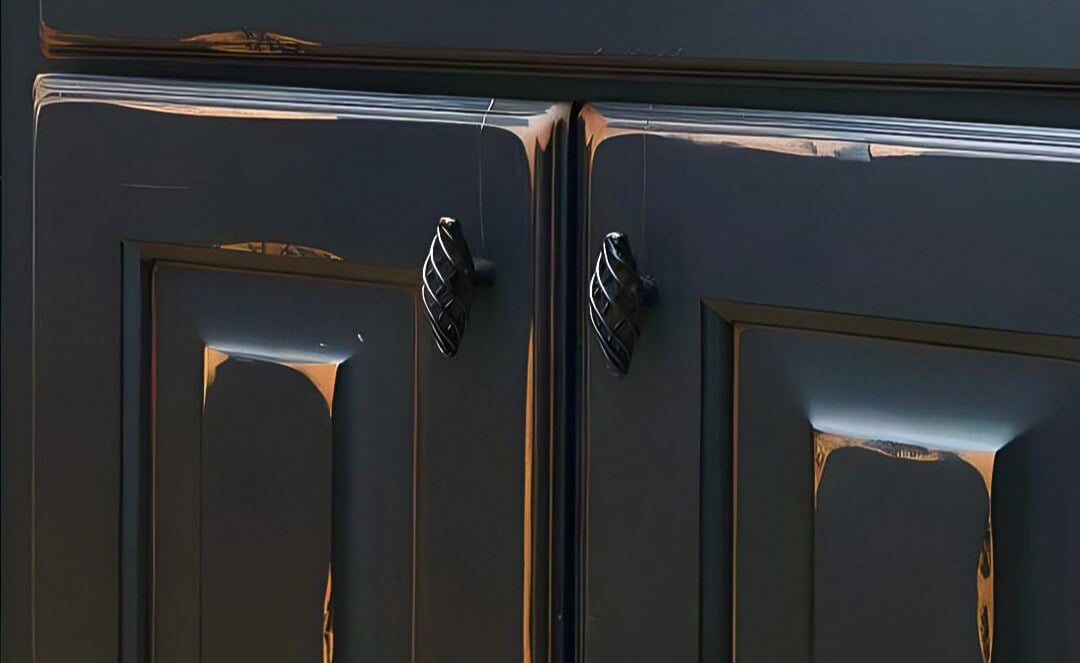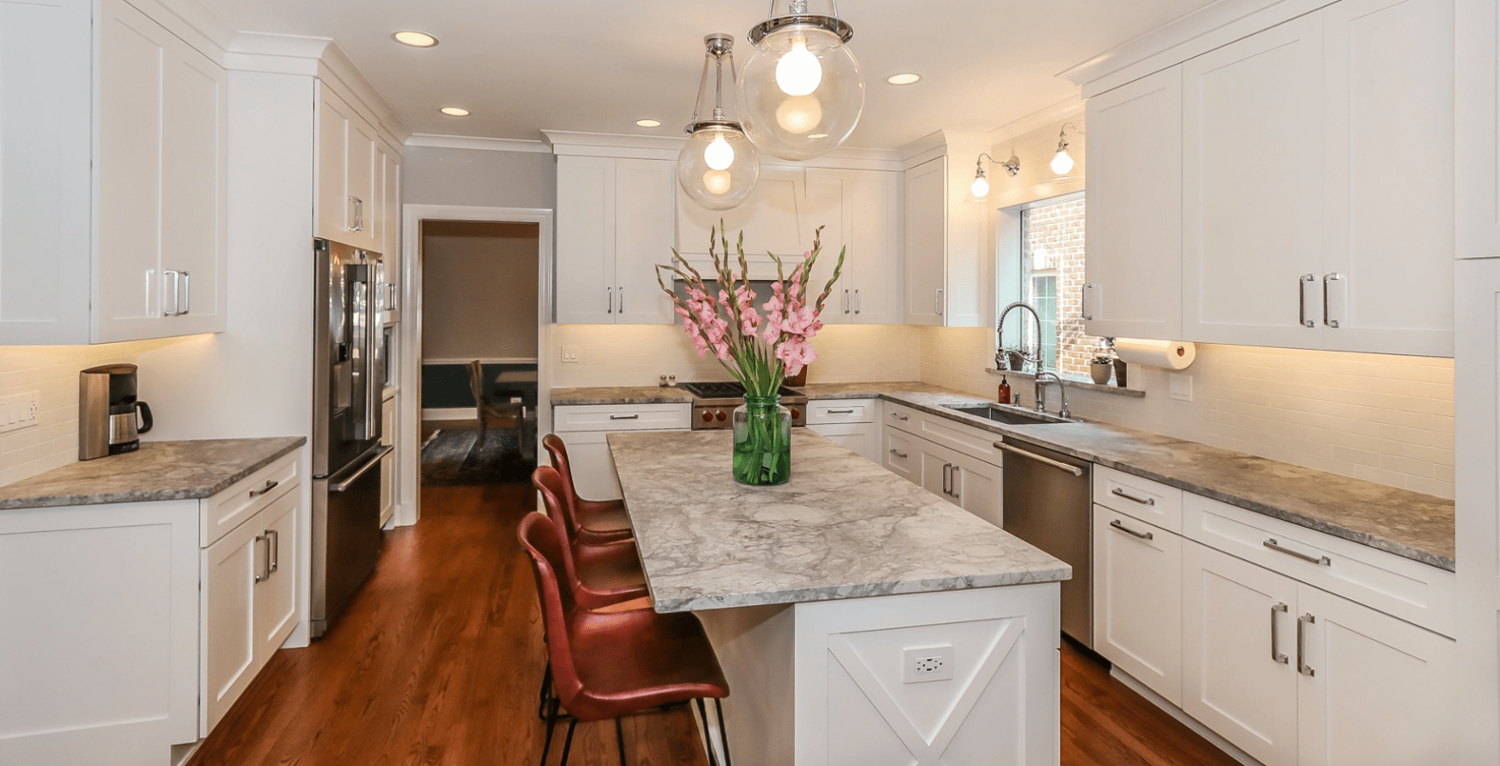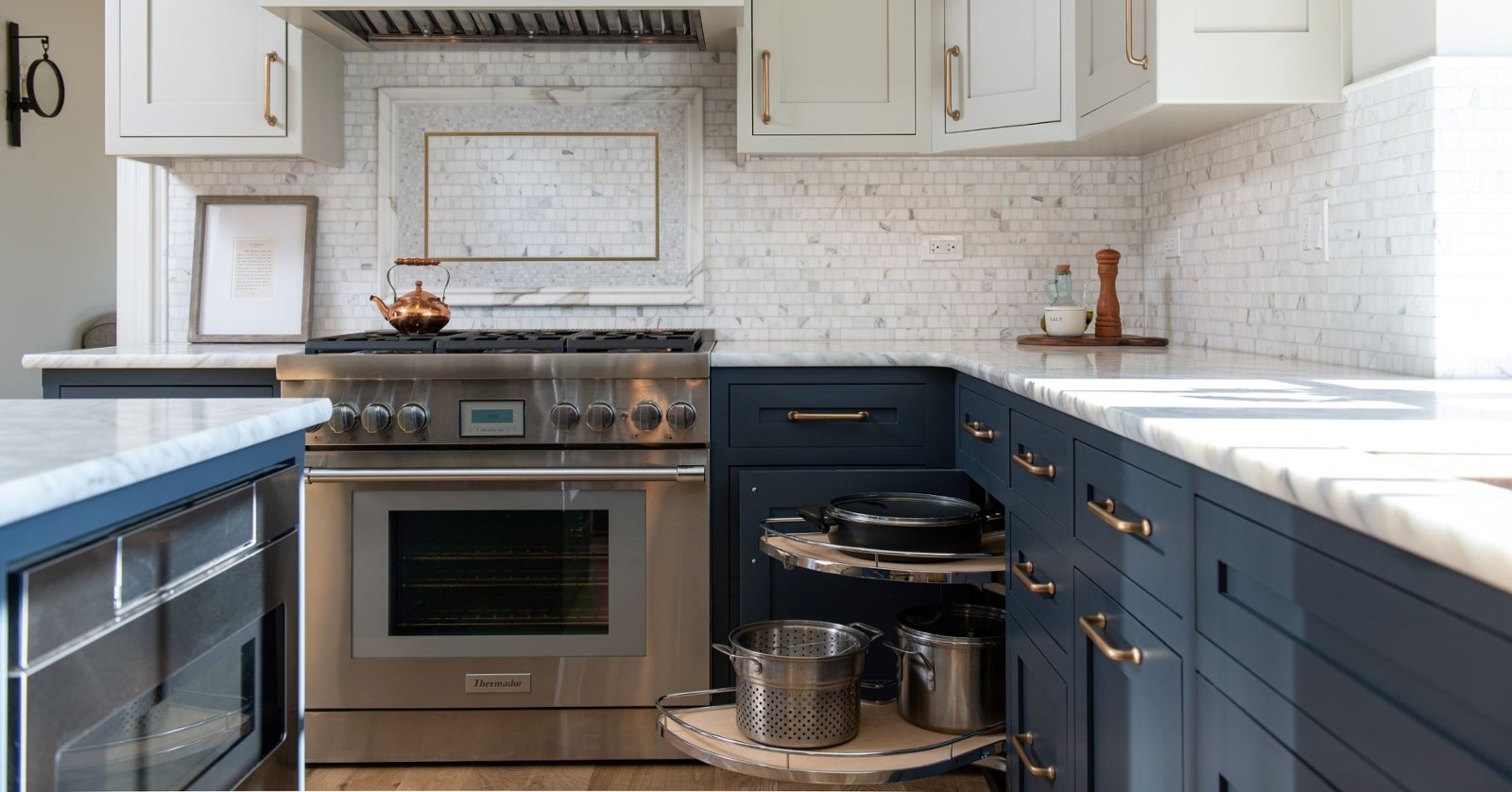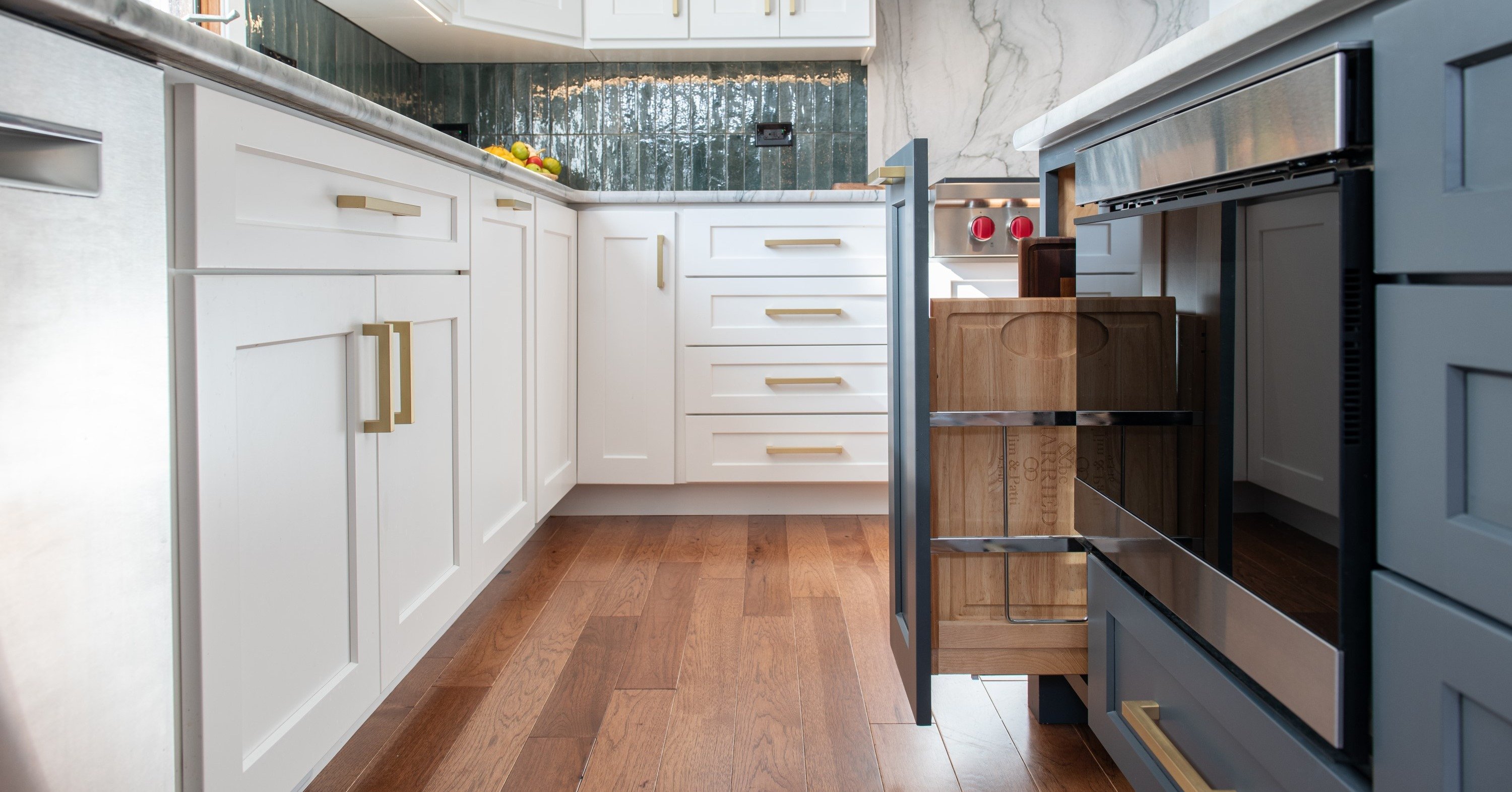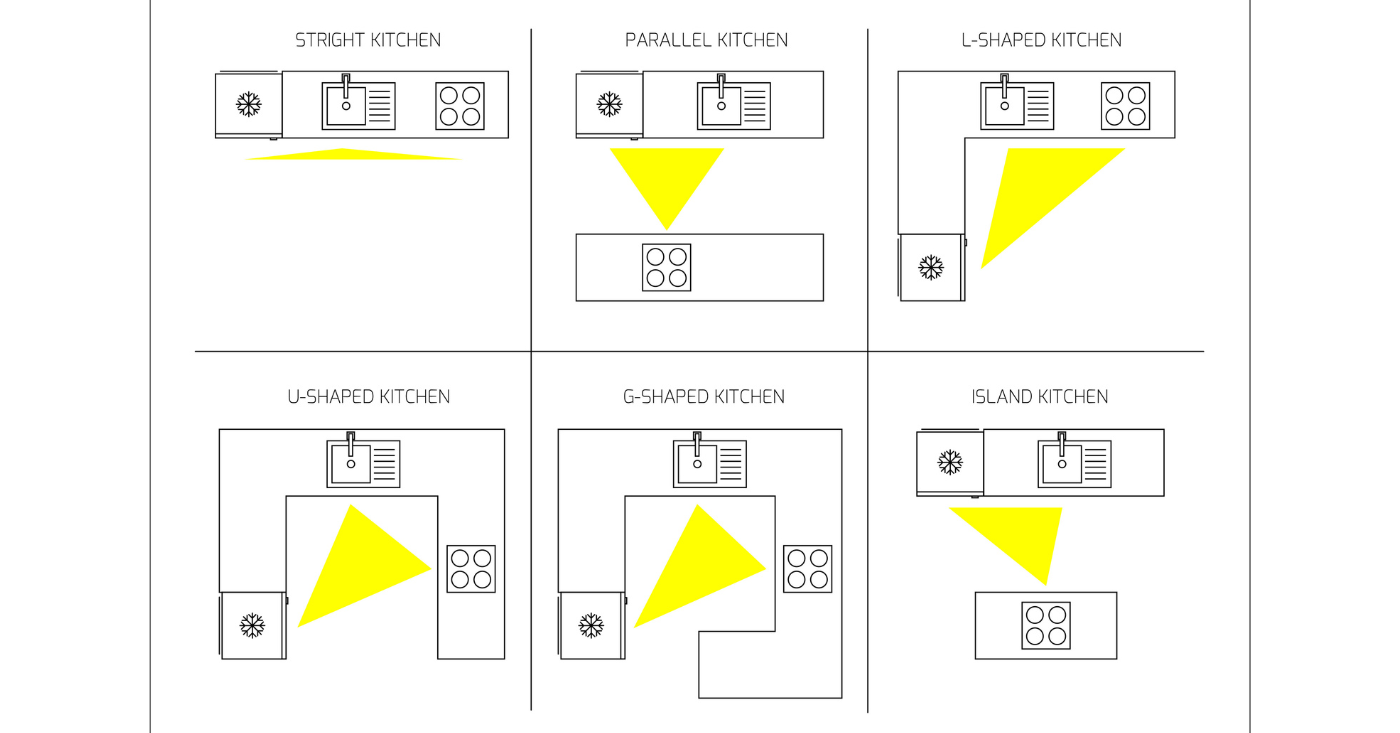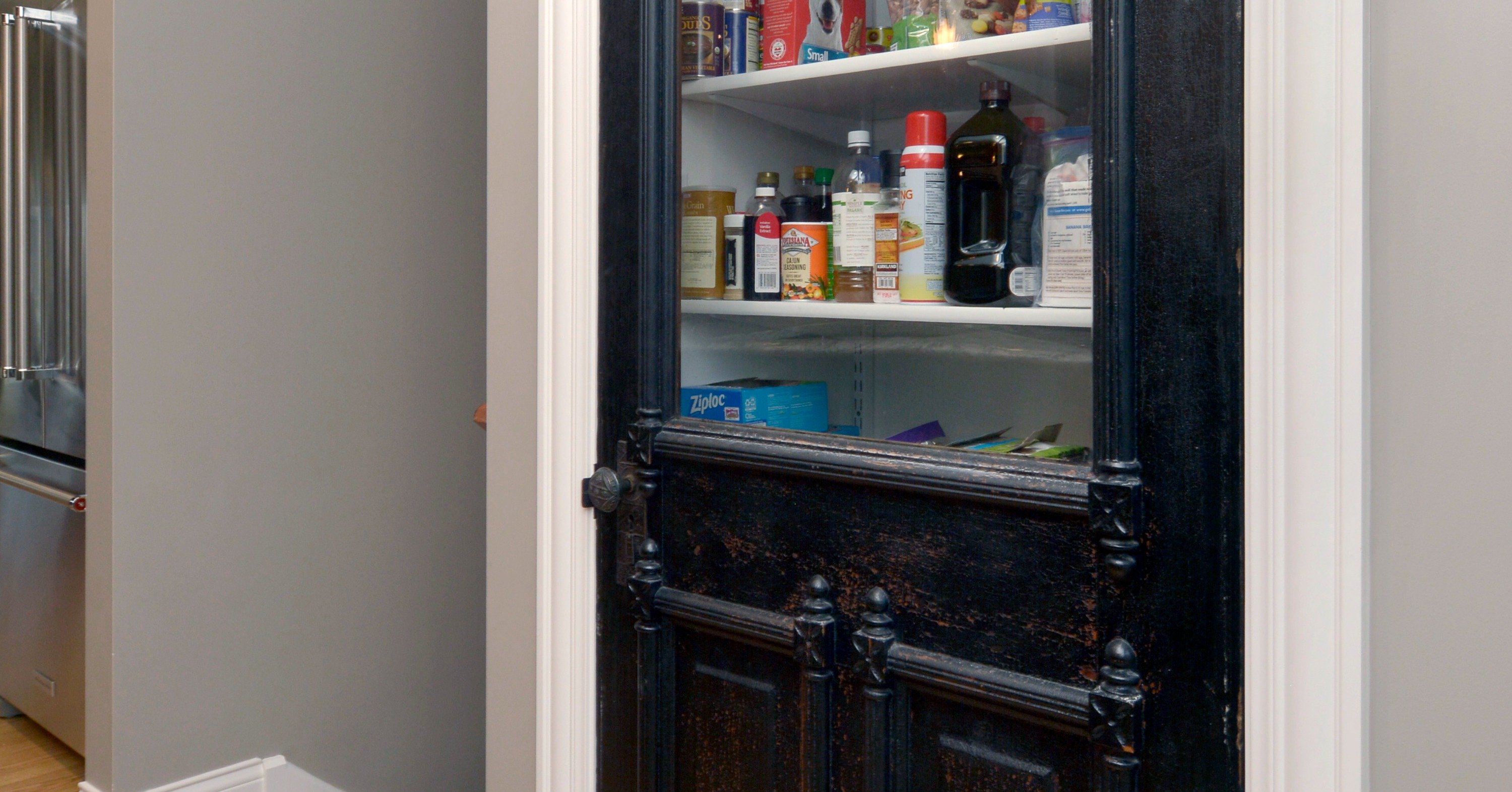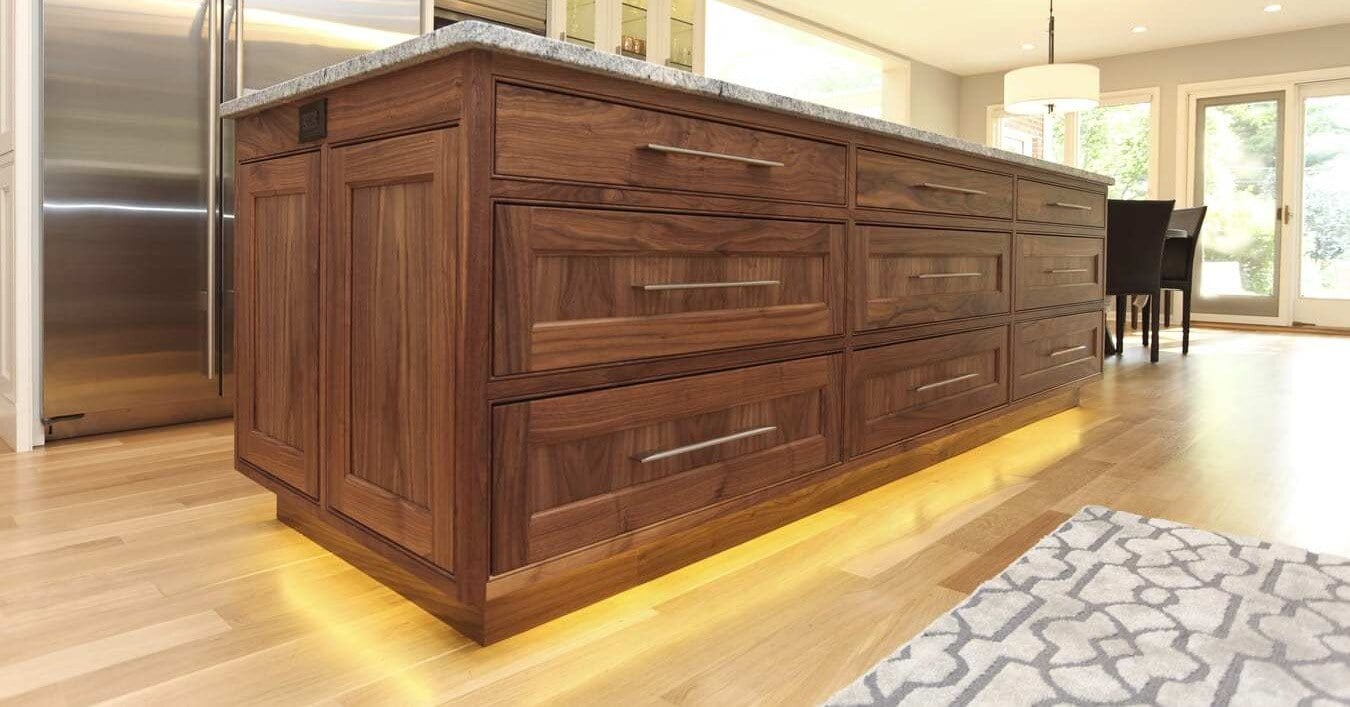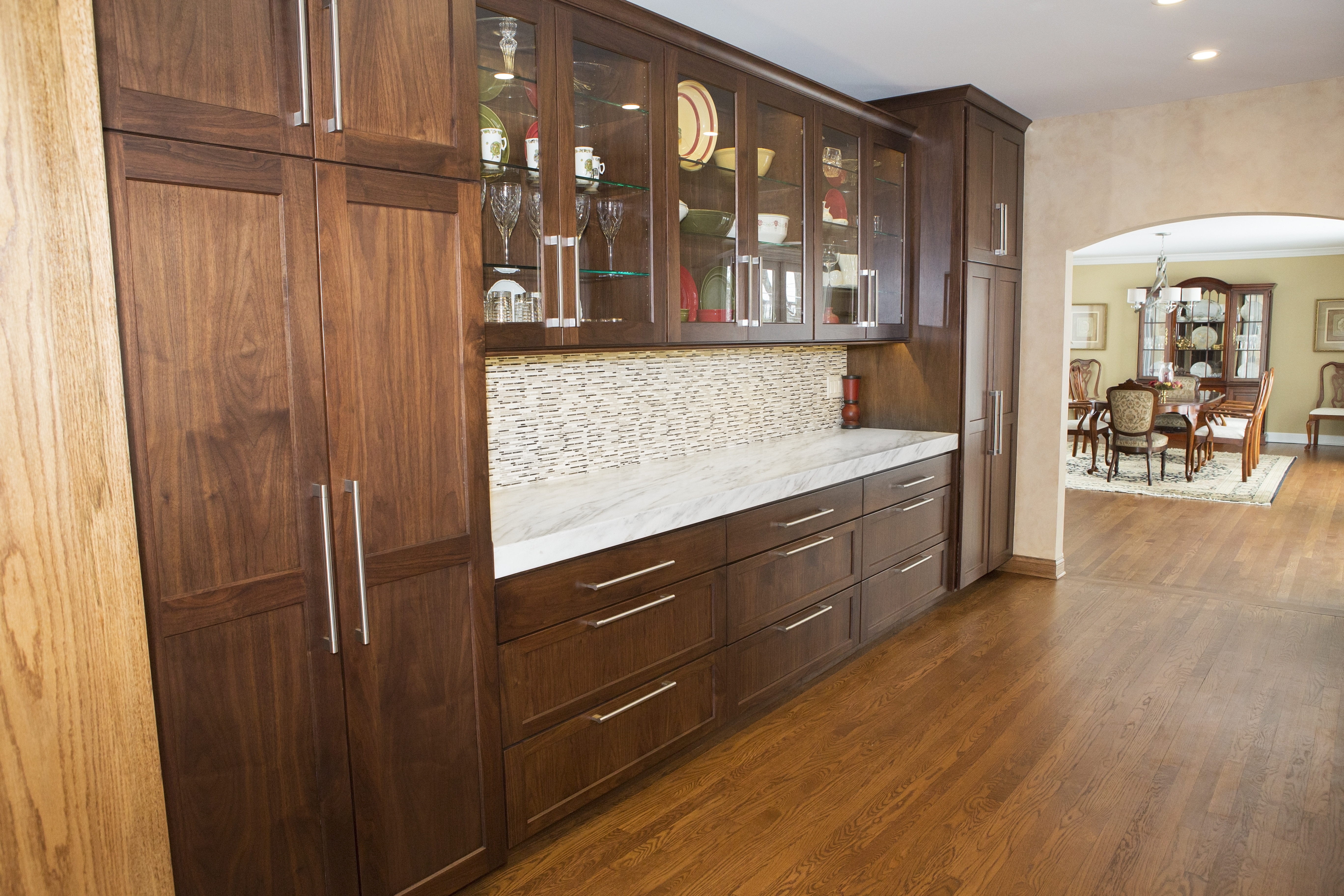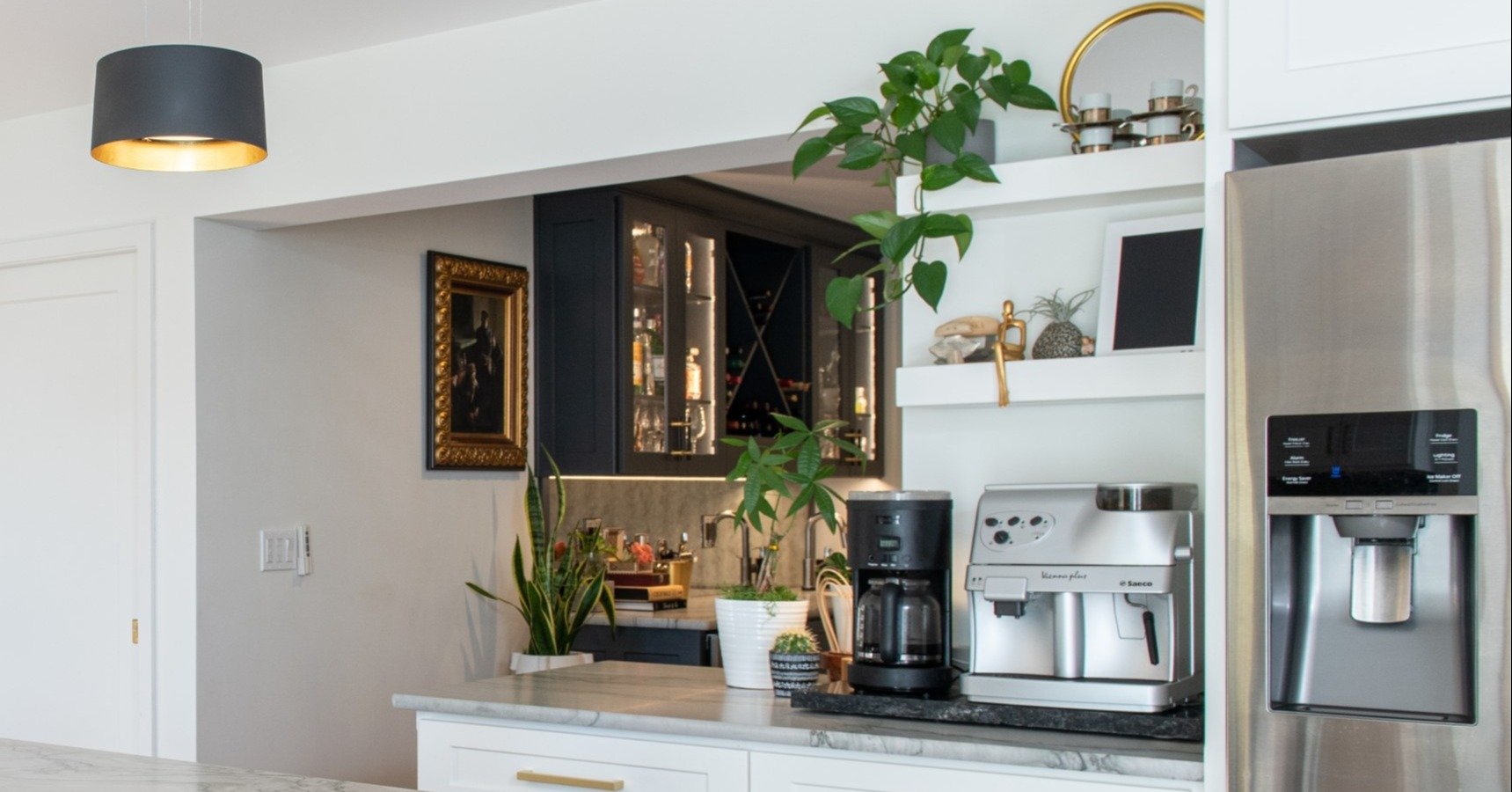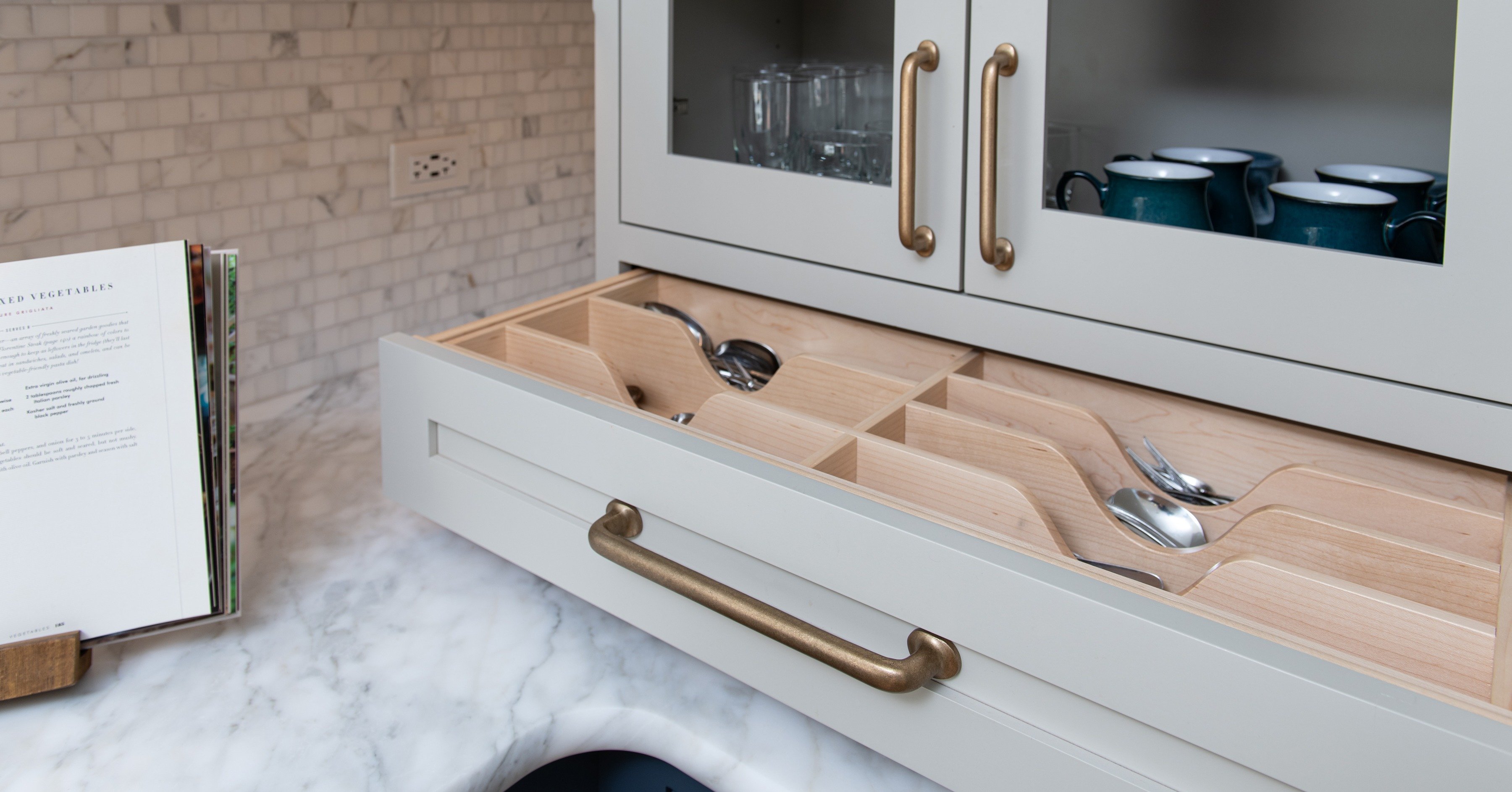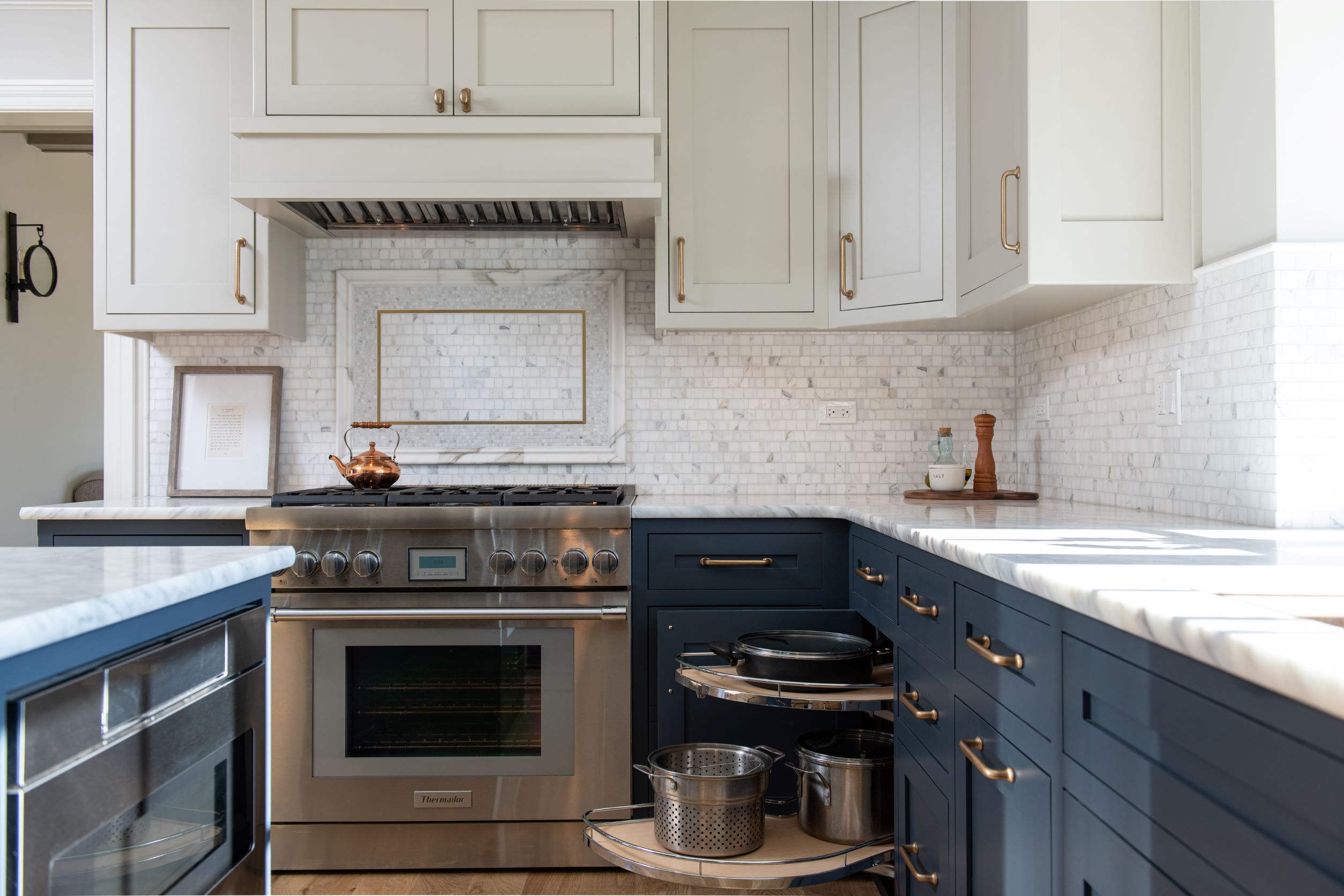Gas vs. Electric vs. Induction: What's the Best Stove for Your Kitchen?
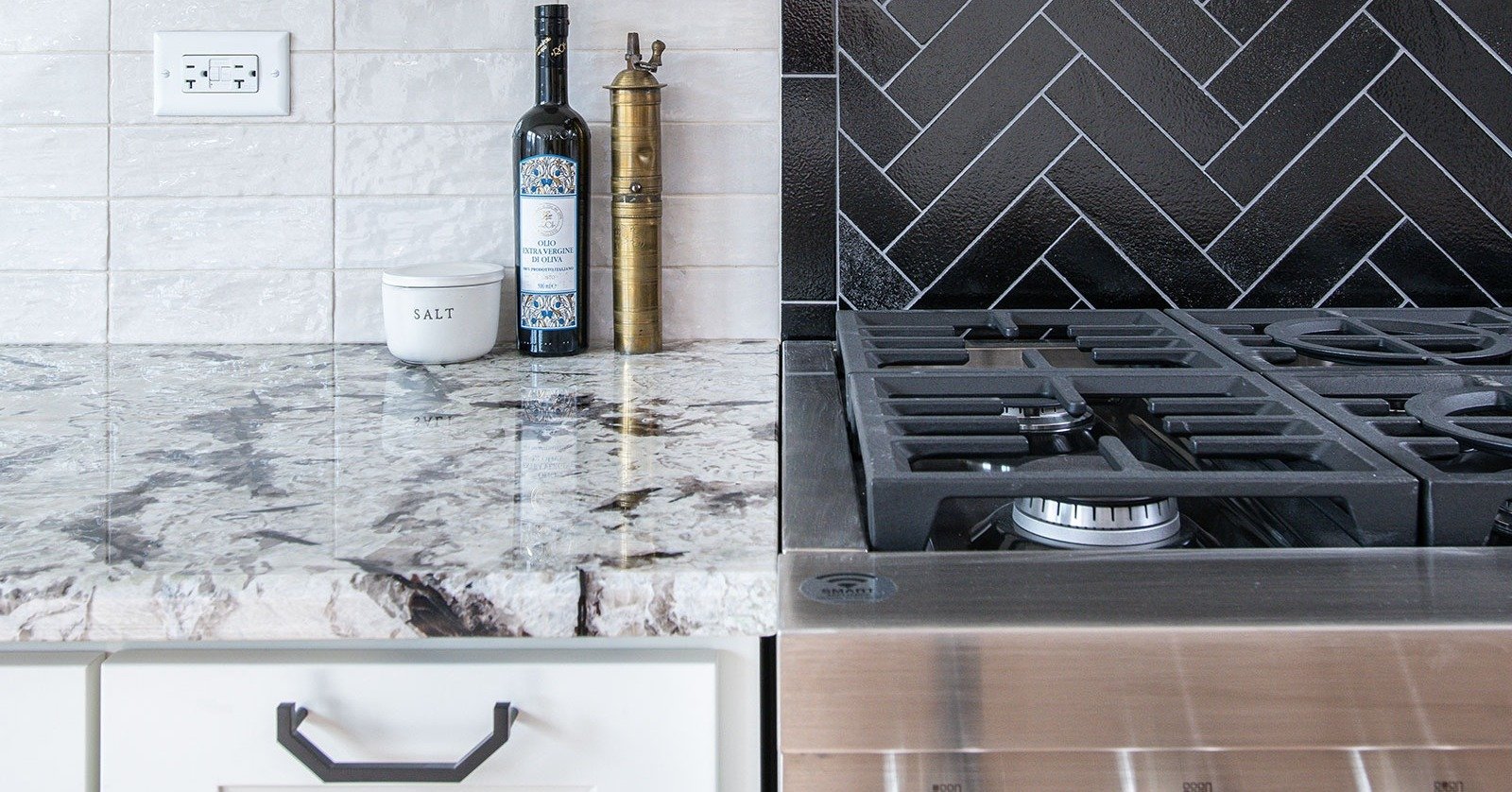
Listen to the Blog Post
A common question we’re asked is, “What type of stove should I put into my new kitchen?” While this is a very debated topic, and many have strong opinions that are very valid, we try to do our best to guide homeowners to a decision based on the individual client’s needs, lifestyles, and habits.
This article will outline the common pros and cons of each, and hopefully aid you in making the right decision for your specific lifestyle and needs.
3 Types of Kitchen Stoves: Understanding General Terms
Before choosing the type of fuel source to power your kitchen stove, let’s first define the common types of stoves.
 Cooktop (Stove)
Cooktop (Stove)
A cooktop is a flat cooking appliance built into a countertop and used to heat and cook food. The cooktop’s surface provides burners or heating elements but does not include an oven as part of its design. Cooktops can be fueled in various ways, including gas, electric, or induction. Many homeowners use the terms “stove” and “range” interchangeably, though technically, these are different appliances.
Range
A range is a free-standing combination appliance that includes both a cooktop and oven within one unit. A range typically includes a control panel for each part. Ranges can be fueled by gas, electric, dual-fuel (gas cooktop with electric oven), or induction.
Oven
An oven is an enclosed compartment that is used for baking, roasting, broiling, or toasting food. An oven can be built into cabinetry (wall oven) or part of an “all-in-one” freestanding range. Ovens may not include a cooktop and are solely used for baking, broiling, and roasting.
Weighing the Benefits and Challenges of Gas Ranges
While many are familiar with gas ranges, it's important to understand how they differ from other types of stoves. A gas range is a traditional and widely used cooking appliance that heats the oven or stovetop using an open flame powered by natural gas, and less commonly with propane.
Pros of Using a Gas Range
- Speed and Control: Gas ranges are known for their ability to quickly reach the desired cooking temperature, offering a significant advantage when it comes to speed. The flame produced by a gas burner allows for instant heat, meaning it can heat up much faster than electric or induction cooktops. Additionally, gas ranges provide more precise control over temperature adjustments, allowing for fine-tuning during cooking. This level of control means that cooks can easily regulate heat levels, ensuring they can quickly adjust for delicate tasks like simmering sauces or rapidly bringing a dish to a boil.
- Direct Flame Access: One of the standout features of gas stovetops is the direct access to an open flame. Many cooks appreciate the versatility that comes with this feature, as it allows them to perform tasks that are difficult or impossible with electric or induction cooktops. For example, an open flame is ideal for charring, toasting, or even flambéing a dish. The visual cue of the flame provides immediate feedback, making it easier to gauge heat intensity and cooking progress. This direct flame access is also essential for certain cooking techniques that rely on the unique properties of a gas flame, such as searing meats to achieve a crispy exterior.
- Industry Standard: Gas ranges are considered the professional choice for chefs, both in home kitchens and commercial settings. Most restaurant kitchens are equipped with gas stoves due to their speed, precision, and versatility. For passionate home cooks or aspiring chefs, gas ranges offer a cooking experience that closely mimics professional environments. The ability to easily adjust the flame, combined with the consistent and responsive heat, makes gas ranges a preferred option for those who value control and performance in their cooking. People who take their cooking seriously often gravitate toward gas ranges because they provide the level of responsiveness and technique required for more advanced culinary tasks.
- Gas Availability: In areas like the Greater Chicago region, where many homes are already connected to natural gas lines, a gas range can be a more practical and cost-effective choice. Since natural gas is readily available, there is no need to invest in the installation of an electric-powered stove or make changes to the home's infrastructure. This eliminates the need for costly labor and installation fees that would otherwise be required to switch to an electric or induction system. For homeowners already connected to natural gas, the switch to a gas range can be seamless and economical.
- Reliability: While not often highlighted, another advantage of having a gas-fueled stovetop is its functionality during power outages. Unlike electric or induction cooktops that depend on electricity to operate, gas stoves can still be used when the power goes out. This makes them a valuable resource during power disruptions caused by storms, natural disasters, or other emergencies, allowing you to continue cooking even when the grid is down.

Cons of Using a Gas Range
- Safety: While an open flame can provide specialized utility in the kitchen, there’s no denying that it can be dangerous, especially if you have children or pets. A common safety concern with a gas range is the risk of leaving the gas on or, worse, accidentally bumping and turning it on. These concerns are more prevalent in homes with children or those with aging adults who suffer from memory loss. Along with safety concerns like unknowingly turning the stove on, studies have also found a connection between natural gas use and an increased risk of childhood asthma.
- Ventilation is critical: Proper kitchen ventilation is essential for maintaining a healthy and comfortable home. Without proper airflow, cooking can lead to lingering odors, excess moisture, and the accumulation of harmful pollutants, such as carbon monoxide and nitrogen dioxide. Over time, poor ventilation can damage cabinetry, trigger allergies, and even affect indoor air quality throughout the house. Addressing common ventilation challenges ensures your kitchen not only smells fresh but also supports the health and safety of everyone who uses it.
- Storage/Installation: Some gas cooktops feature a drawer underneath the oven for pot and pan storage. If installers mismeasure the space, the drawer could press against the natural gas piping behind the unit and, over time, potentially loosen the gas pipe, leading to a gas leak.
- Cleanliness: In general, cleaning a gas range tends to be more challenging compared to other types of cooktops, primarily because of the burners and grates that surround them. These components can accumulate grease, food spills, and grime over time, requiring more effort to clean thoroughly. While gas ranges offer excellent cooking performance, maintaining cleanliness requires a bit more effort compared to the smoother surfaces of electric or induction cooktops.
Electric Cooktop Overview: Benefits & Drawbacks of Electric Cooking
Next, let's talk about electric cooktops. These appliances feature flat cooktop surfaces typically made from a ceramic-glass blend. The surfaces are heated using electric coils that are either visible or concealed beneath the glass. The heat generated by these coils transfers from the surface to the cookware, providing the necessary heat for cooking. Here are the pros and cons of electric cooktops:
Pros of Using an Electric Cooktop
- Fuel Source: Electric cooktops do not rely on natural gas, making them an ideal choice for households looking to avoid the use of gas in the home or for homes that do not have a gas line connection. Choosing an electric cooking surface can be especially appealing for those concerned about gas-related safety risks.
- Heat Consistency: A key benefit of an electric cooktop is its ability to provide consistent and even heat across the entire burner surface. Unlike other cooking methods that may result in uneven heat distribution, electric cooktops ensure uniform heating throughout. This reliability makes it easier to achieve predictable cooking results, especially for dishes that require steady, even temperatures. Whether you're simmering a sauce, boiling water, or frying food, the even heat prevents hot spots and ensures your cookware heats evenly. This precision is particularly useful for tasks like melting chocolate or preparing delicate sauces.
- Aesthetics: Some homeowners prefer an electric cooktop's smooth top and minimalist look. Additionally, when the burners are not in use, they can provide an even surface for extra counter space; however, it's vital that you take steps to protect the cooktop surface from potential damage.
- Ease of Cleaning: One of the standout benefits of electric cooktops is their flat, smooth surface, which makes cleaning incredibly easy. Unlike traditional gas ranges with multiple grates and burners that can trap food particles and grease, the seamless design of an electric cooktop allows you to wipe down the surface with minimal effort. Spills and splatters are much easier to clean up, as they don’t get caught in hard-to-reach places.
Many electric cooktops are made from glass-ceramic materials that are aesthetically pleasing and resistant to stains and spills. With just a damp cloth or specialized cleaner, you can quickly remove residue and maintain a pristine cooking surface. This makes electric cooktops an attractive option for those who want a low-maintenance, easy-to-clean cooking appliance that keeps their kitchen tidy and organized. - Affordability: Electric cooktops are generally more budget-friendly than their gas counterparts. The initial purchase price of an electric cooktop is typically lower than that of a gas cooktop or range. This affordability extends not only to the appliance itself but also to the installation process. Since electric cooktops don’t require a gas line connection or venting, installation is generally simpler and less costly, which can result in additional savings.

Cons of Using an Electric Cooktop
- Safety Concerns: One of the drawbacks of using an electric cooktop is that it can remain hot for some time after use, posing a risk of accidental burns if the surface is touched before it cools down.
- Durability: The smooth, glass surface can be more prone to cracking or damage compared to a gas cooktop, making it more delicate and requiring careful handling. The cost of repairing or replacing a damaged surface can be substantial.
- Adjusting Cooking Temperature: One common drawback of electric cooktops is that they tend to respond more slowly to changes in temperature compared to gas or induction ranges. When you adjust the heat on an electric stovetop, whether increasing or decreasing the temperature, it can take longer for the burner to heat up or cool down, which may lead to delays in cooking. This slower response time can be frustrating for those accustomed to the immediate heat control offered by gas or induction cooking, where temperature changes are more instant and precise. As a result, recipes that require quick adjustments, such as searing or rapidly changing heat levels, may be more challenging to manage on an electric cooktop.
- Selection and Variety: When it comes to selecting an electric cooktop, the options available can be influenced by your budget. While there are plenty of affordable models on the market, the range of choices may be more limited in the luxury category. Many high-end or luxury appliance brands tend to focus more on gas or induction cooktops and may not offer electric alternatives in their product lines. This means that if you’re looking for a top-tier, designer cooktop, you may have fewer electric options to choose from.
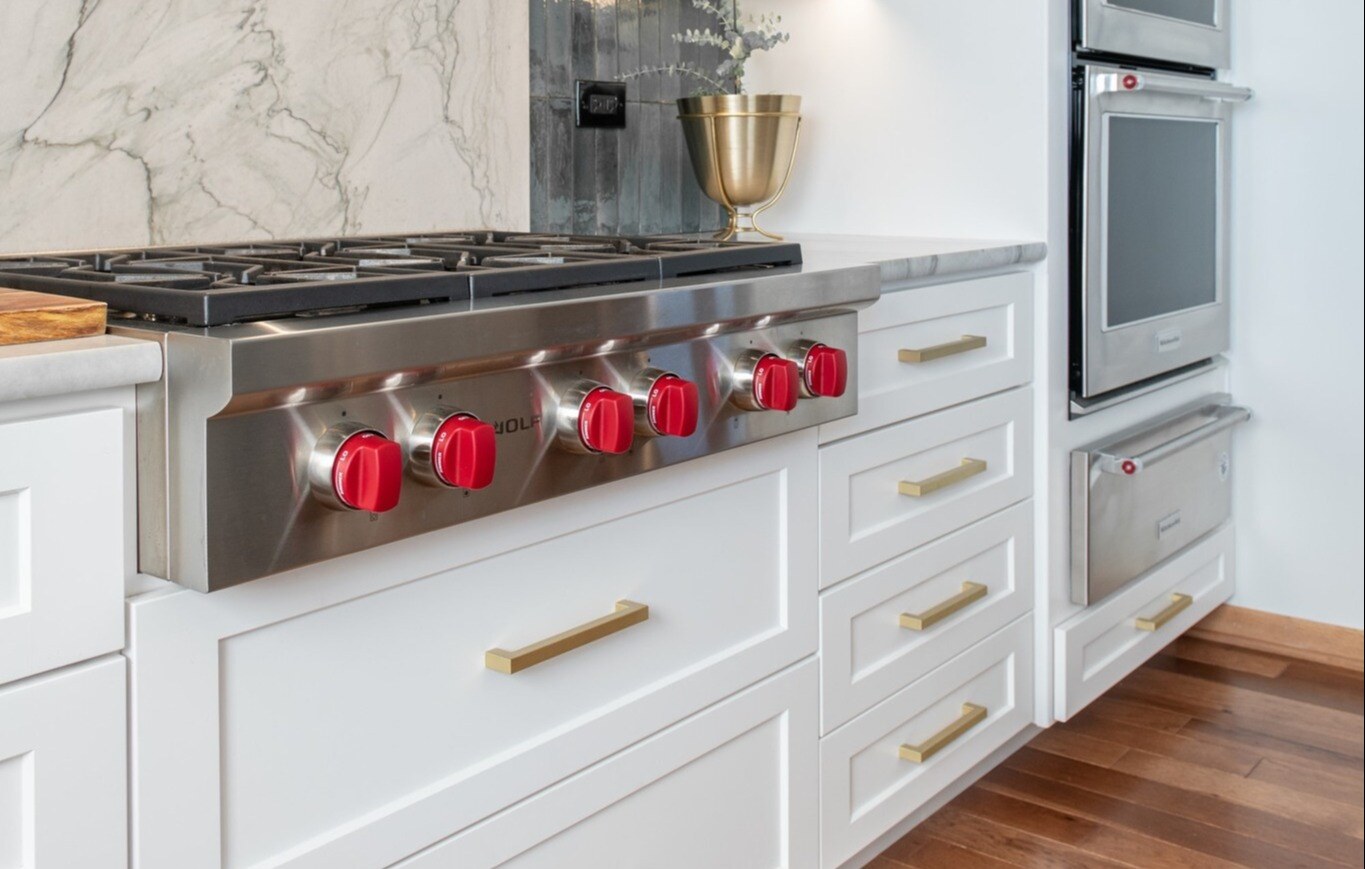
What is an Induction Range? Understanding the Basics
Lastly, we’d like to discuss induction ranges. Similar to an electric stove, an induction range is powered by electricity. Where they begin to differ is in the way that they generate and transfer heat. An induction range uses electromagnetic energy to directly heat the cookware being used, whereas an electric or gas stove first heats the glass surface of the burner and then transfers the heat to the cookware. Here are the benefits and drawbacks of an induction range.
Pros of Using an Induction Range
- Safety: One of the significant advantages of an induction range is its enhanced safety features. Since the heat is generated directly within the cookware, the induction burner itself remains much cooler to the touch compared to electric and gas burners, reducing the risk of burns or accidental injury. This makes induction cooking a safer option, especially in homes with children or pets. Additionally, induction ranges use electricity rather than natural gas, making them an excellent choice for those looking to eliminate gas use from their homes, which can help avoid concerns about gas leaks or the potential dangers of an open flame.
- Precise Temperature Control: Induction ranges offer precise and immediate temperature control, allowing you to adjust the heat quickly and accurately. Unlike electric cooktops, induction stoves respond instantly to changes in temperature settings, giving you greater control over your cooking.
- Cleanliness: Similar to an electric cooktop, induction stovetops feature a flat surface, making them easy to clean.
- Energy Consumption: Induction ranges are known for their energy efficiency. According to Energy.gov, induction stoves can be up to 10% more efficient in energy consumption compared to electric ranges and up to three times more efficient than gas ranges. This is because induction cooking directly heats the cookware rather than the surrounding air, resulting in less wasted energy.
Cons of Using an Induction Range
- Price: One of the primary drawbacks of induction ranges is their higher upfront cost compared to gas or electric cooktops. Induction ranges are typically more expensive due to the advanced technology used to generate heat directly in the cookware. Induction cooking requires specialized magnetic cookware that must be compatible with the induction process. If your existing cookware isn't induction-ready, you'll need to invest in new pots and pans, further increasing the overall cost. While the long-term energy savings can help offset the initial investment, the higher price point can be a barrier for some homeowners.
- Cracking: Similar to electric stove tops, induction ranges feature a flat glass top that, while sleek and easy to clean, can be prone to damage and cracking. Dropping heavy pots or pans or using cookware with rough or uneven bottoms can cause the surface to crack. Since the cooktop is an essential part of the appliance, repairing or replacing a cracked induction surface can be costly and time-consuming. Careful handling and maintenance are required to avoid this issue, making induction ranges less durable than other cooktop options.
- Learning Curve: For those accustomed to cooking with gas or traditional electric ranges, transitioning to an induction cooktop can present a learning curve. Induction cooking is quite different from the other methods, with precise, immediate temperature control and a completely different way of generating heat. It may take time to get used to how induction ranges respond to adjustments, as the heat levels change more rapidly than with gas or electric models. Induction cooking doesn’t produce the same direct flame or radiant heat, which means achieving certain cooking effects, such as the "char" on grilled foods, can be more challenging. This can be a disadvantage for cooks who enjoy the nuances of gas or electric cooking, such as browning or caramelizing food with a flame.
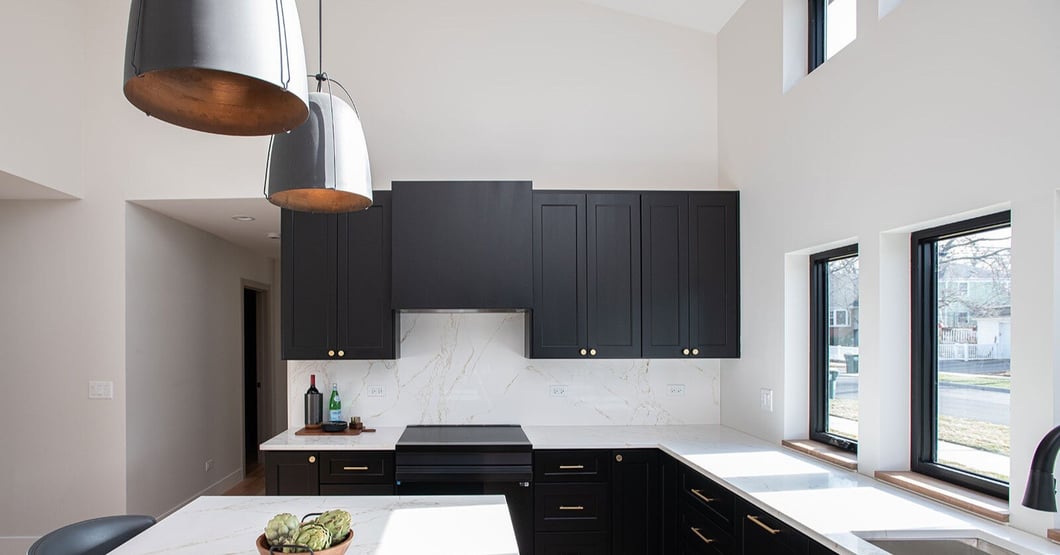
Matching Your Stove to Your Kitchen Design and Needs
Take a moment to evaluate your cooking habits and lifestyle to determine which type of stove suits you best. If you’re someone who consistently keeps your kitchen tidy and has no trouble wiping down the stovetop after each use, you might not be bothered by cleaning a gas stovetop regularly. However, if regular cleaning feels like a chore, you may prefer the low-profile design of an electric or induction cooktop, which tends to be easier to clean on a regular basis.
Additionally, consider how you move around the kitchen. If you’re a bit clumsy or prone to dropping utensils or cookware, a gas stove with durable metal grates may be a better choice. Gas stoves are less likely to sustain damage from accidental impacts compared to the smooth glass surfaces of electric or induction cooktops, which can crack or scratch under heavy force. You can select a stovetop that fits seamlessly into your cooking routine by aligning your choice with your habits and tendencies.
Making an Informed Decision Through Research and Personal Experience
To find the best fit for your home, we recommend you look at appliances in person to determine the size and style you want, because this could dictate your decision. Talk to the sales reps about their market observations and determine if certain brands or models have a stronger following or greater popularity. Since appliance brands typically offer all three options: gas, electric, and induction, receiving feedback from sales representatives shouldn’t skew their advice and recommendations.
Ask friends and family for recommendations, and also what they like/dislike about their current stove. If someone close to you owns the type of range you are considering, a great option would be to test it out by cooking with it to see if it works for you.
.png?width=1600&height=800&name=gas-electric-induction-stove%20(1).png)
Future-Proof Your Kitchen: Preparing for Gas and Electric Options in Remodeling
With ongoing discussions about potential gas bans in certain areas, future-proofing your kitchen is a wise choice. Preparing your space to accommodate both gas and electric stoves ensures maximum flexibility for your current and future needs. If you’re remodeling, take advantage of the opportunity to install both gas and electric lines while the walls are open. This approach is not only efficient but also cost-effective, as retrofitting these utilities later can be far more expensive and disruptive.
Even if you choose to cap the gas line for now, keeping it intact is a strategic decision. A functional gas line can be a valuable selling point should you decide to put your home on the market, especially since many homes continue to use natural gas for other systems like furnaces and water heaters. Having this infrastructure in place ensures convenience for potential buyers who might prefer a gas stove.
By taking these future-proofing steps during your remodel, you’ll enjoy greater flexibility to choose the stove that suits your lifestyle, easily adapt to evolving energy trends or regulations, and enhance your home’s market appeal. Planning ahead not only future-proofs your kitchen but also positions your home as a versatile and desirable option in the real estate market.
How to Confidently Choose the Best Stove with Guidance
When it comes down to making the decision of which stove is best, there is no right answer. It’s all about personal preference and your comfort in your home. Work with an experienced design-build firm that will guide you through your options, help you plan for the future, and help you uncover what option will work best for your family and lifestyle.
Are you ready to plan your dream kitchen remodel? Download our eBook, Elevate Your Everyday: The Kitchen Remodel Guide for Style and Function, to get started.






